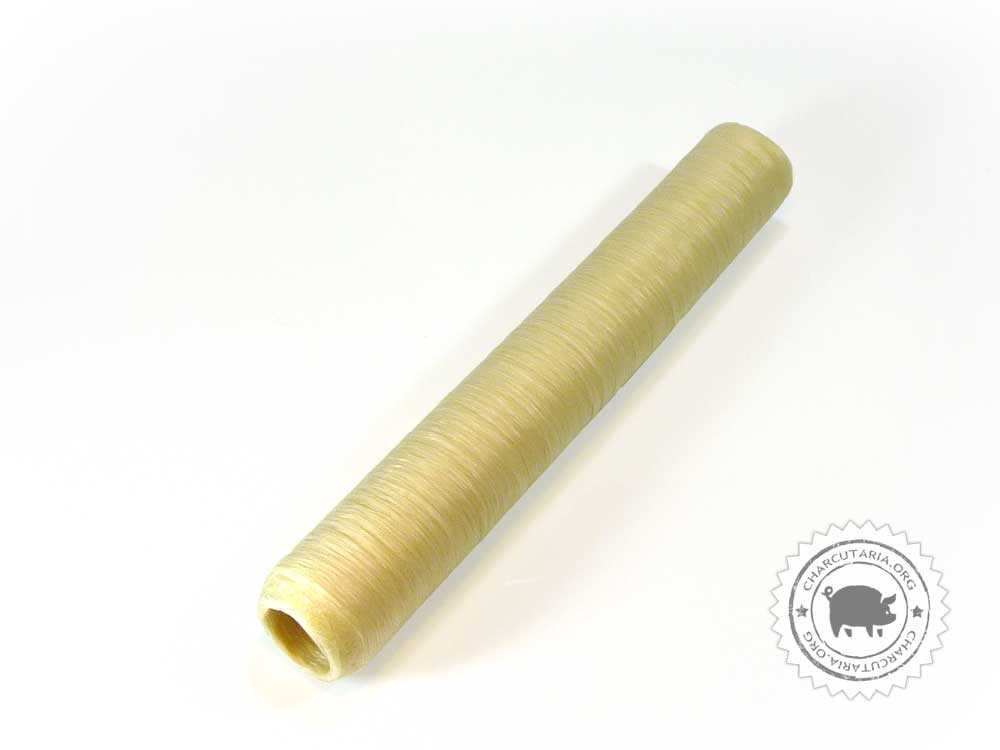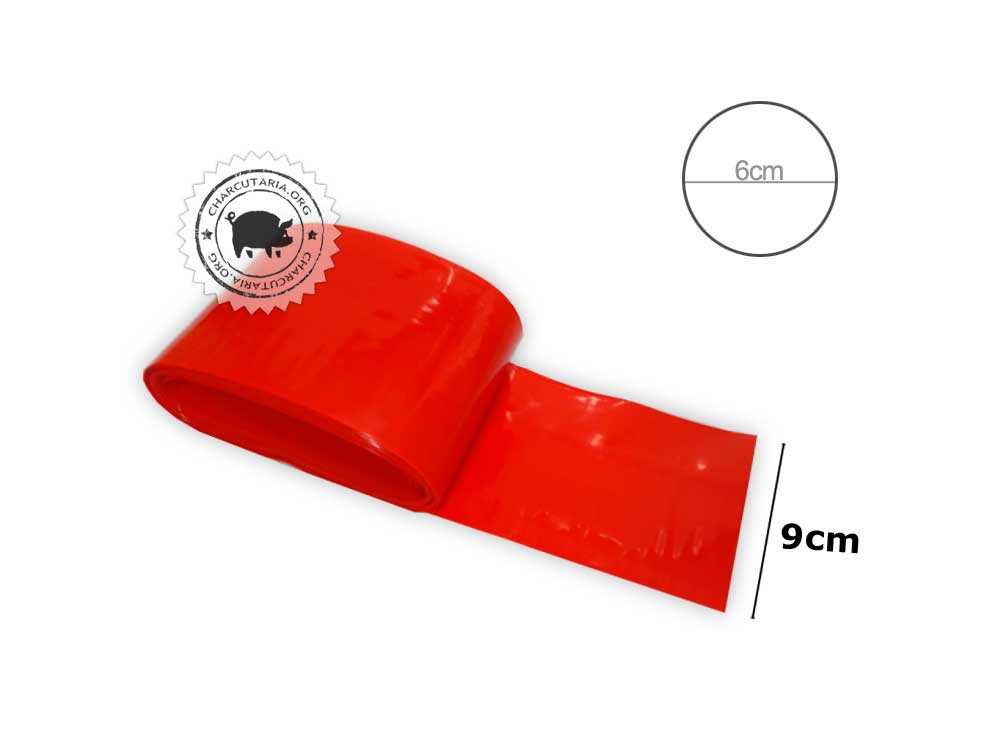
Desde a antiguidade, o homem utiliza diferentes tipos de envoltórios ou, como são chamados genéricamente, tripas, na busca incessante pela conservação das carnes por mais tempo. Na antiguidade era crucial ter um produto com maior durabilidade, seja para o consumo durante as longas viagens da época ou para os períodos sem alimento devido ao intenso frio.
Objetivando conservar as carnes decorrentes da caça, os povos antigos, exímios caçadores, cortavam as carnes em pedaços menores, as temperava com sal e, em seguida, as armazenavam dentro da tripa dos próprios animais. Daí surgiu, o que conhecemos hoje como linguiças.
A partir do final do século 20 a tecnologia destes produtos evoluiu bastante, principalmente com o avanço do envoltório artificial em substituição às tripas de origem animal. Porém, algumas práticas básicas atualmente utilizadas são quase tão antigas como aquelas presentes na antiguidade.
Quais os tipos de tripas naturais e artificiais mais comuns?
Os embutidos são produtos obtidos a partir do processo de moagem de carnes em uma granulometria que varia de grossa a fina, dependendo do tipo de produto, condimento e embutido utilizados.
No processo de embutimento, a massa cárnea é acondicionada em um envoltório ou tripa, que podem ser naturais ou artificiais, tendo como objetivo principal proteger os produtos de influências externas, além de dar forma e estabilidade.
As tripas naturais mais comuns são a suína, bovina e ovina, já as tripas artificiais mais utilizadas são a tripa de colágeno, tripa artificial de celulose, fibrosas e plásticas. Cada uma delas têm suas características e usos específicos, e dependem totalmente da necessidade de uso.
Diversos tipos de tripas para diversas necessidades
Devido ao elevado número de opções à disposição para uso como envoltório, na maioria dos produtos há mais de uma opção e a escolha sempre deve ser feita com base em critérios técnicos, econômicos e de público alvo.
- Salsichas tipo hotdog comercializadas sem o invólucro geralmente são cozidas em tripas de celulose, que posteriormente são removidas antes de serem embaladas;
- Em produtos cozidos de calibre elevado, recomenda-se o uso de tripas fibrosas, plásticas ou termoplásticas;
- Linguiças e salsichas que passam por defumação precisam de tripas específicas que permitam o aproveitamento do processo, caso das tripas naturais ou de colágeno;
- Linguiças que passem por cura, fermentação ou secagem precisam de embutimento em tripas naturais ou de colágeno que tenham a porosidade correta para a perda de umidade gradual;
- Linguiças frescas devem ser embutidas sempre em tripa natural suína, ovina ou de colágeno comestível.
O que considerar na escolha do envoltório para salsichas e linguiças?
É importante determinar o público alvo do produto. O conhecimento e exigência do mercado e seus consumidores vem aumentando, e isso trás novos desafios e novas oportunidades para a indústria de embutidos.
Em seguida vem a produtividade, que está intimamente ligada ao fator econômico. Produtos com margem de lucro baixa devem contabilizar os ganhos em produtividade, já os produtos diferenciados com margens maiores devem procurar o invólucro que traga a maior valorização pelo consumidor.
Outra variável é a dinâmica do mercado, que influencia muito na escolha e, por isso, o produtor precisa estar sempre atento ao cenário. As variações do dólar, importação e exportação tem tido uma dinâmica muito volátil nos últimos anos e os preços dos invólucros têm seguido a tendência e sofrido variações constantes.
Por fim, as questões técnicas da escolha se baseiam nas principais diferenças entre cada tipo de envoltório a ser utilizado. Alguns pontos fundamentais de cada uma delas.
Tripas de colágeno comestíveis
Ideais para linguiças e salsichas, pois promovem ganho em produtividade, higiene, resistência e padronização de calibre. O ganho de produtividade das tripas de colágeno, principalmente em frigoríficos de médio e grande porte é considerável, pois já vêm prontas para uso.
Não há necessidade de lavar ou enxaguar, reduzindo o manuseio e consequentemente o risco de contaminação. Em contrapartida, as tripas de colágeno têm digestibilidade relativamente menor e sensação de mordida e mastigação menos agradáveis do que as tripas naturais.
Tripas naturais suínas e ovinas
Boas opções para linguiças frescas e salsichas especiais. São ótimas opções para produtos com maior valor agregado. São mais macias e elásticas, com firme aderência à mistura e ótima sensação de mordida, mastigação e digestibilidade, tendo aparência menos industrial.
Em contrapartida, é um produto que gera mais mão de obra, pois na maioria das vezes é conservada no sal e necessita de enxágue.
Tripas artificiais não comestíveis
São ideias para produtos que terão o invólucro removido pelo produtor antes de embalar ou, removidas pelos consumidores (que já são costumeiramente). Tem calibre preciso e excelente resistência mecânica, ótima opção para produtos de grande calibre que passarão por cocção.
Pontos adicionais a serem considerados
Além das características inerentes às tripas e questões econômicas, há outros pontos importantes que devem ser considerados, com os equipamentos disponíveis, capacidade de produção e capacitação/conhecimento dos funcionários são importantíssimos.
Isso porque, determinados produtos precisam de ambientes climatizados e manuseio corretos para que não haja comprometimento dos insumos, caso das tripas de colágeno secas que são suscetíveis à deterioração em ambientes úmidos, perdendo algumas de suas propriedades caso não estejam bem protegidas.






